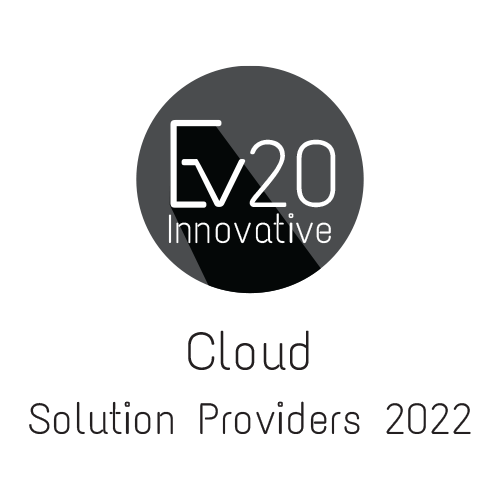We live in a world that is experiencing exponential data growth—and is racing to figure out how to use that data to transform the way we live, work, and operate. The ability to innovate not only requires great ideas and applications—but access to data to fuel these innovations. And, while applications often sit on-site or in the cloud, data is being generated all over—in the cloud, at a remote workstation, in a local office, or through an IoT sensor far, far away. This creates a problem, because historically, for an application to use that data, the data must be in the same location as the compute.
This forces businesses to move and copy their data (such as from remote offices or edge devices) to the compute (such as an in-cloud applications) every time an operation must be executed on that data—creating copy sprawl and increasing storage and data management costs. Most importantly, and often exacerbated by increasing distances between data and compute, the speed to move data is limited by network protocols—meaning moving data is creating significant drag on the time to derive the data’s value… and time to an organization’s insight and action. That price is paid each time a bit of data must be copied to be used. “Very simply: moving data sucks,” said Vcinity’s CEO & Chairman Harry Carr. “We want to change the status quo for how IT supports business operations. And that starts with how you access data.”
Making Data Everywhere Accessible to Applications Anywhere
Vcinity is a remote data access software company that breaks the paradigm that data and compute must be co-located to elicit optimal application performance. “At Vcinity, we’re not breaking the laws of physics, but minimizing the effects. There’s a huge disruption Vcinity is bringing to the industry: you don’t have to move data to use it,” extoled Carr. “Through patented technology, we solve the challenges of utilizing large, dispersed data sets to power mission-critical applications around the world.”
The company enables commercial and federal organizations to choose where they keep their data while retaining the ability to use it anywhere–whether in public/ private clouds, on-premises, or at the edge. Now, applications and users can instantly and securely operate on file or object data, at scale and with local-like performance, while the data stays in place—regardless of the distance between data and compute and whether data is, compressible, de-dupable, or not. Additionally, for instances where data must be moved (such as a datacenter consolidation), Vcinity can help you do so faster than anyone else on the market.
Whether remotely accessing data in real-time or moving data at hyper speeds, the company’s innovative technology can be deployed as bookends across an organization’s choice of hub, edge, and cloud locations (as either hardware or software form factors). This gives users the flexibility to unlock and efficiently use all their data, whenever they want and enabling them to accelerate time to intelligent insights, tap into new datasets and workflows, and optimize business outcomes.
The company also recognized while, in the words of Carr, “the cloud wars are over, and the cloud won,” a cloud-first strategy doesn’t necessarily translate to an all data-in-the-cloud strategy. The key is making data everywhere accessible to applications anywhere—whether that be across a hybrid cloud, multiple clouds, or even a dataless cloud. For instance, some organizations, whether for regulatory, compliance, or pure preference reasons, will always keep certain amounts of—sometimes even all their—data on-premises. Others may establish guidelines where all future application development must be cloud native. Regardless, Vcinity’s software enables organizations to deploy a data strategy that is agnostic to the data’s location. Said Carr, “we want to allow people and organizations to derive value from their data faster, with the freedom to use the tools they want, where they want, when they want.”
That flexibility is purpose-built into the way Vcinity has designed and brought its software to market. “When you’re on a transformation journey and identifying new ways you can use data to run your business better and delight customers,” shared Carr, “the last thing you want to worry about is buying and deploying a bunch of new hardware and overhauling your infrastructure.” Vcinity delivers a non-disruptive deployment that requires no major changes to your existing infrastructure or applications—offering joint solutions and operating seamlessly with leading cloud providers, ISVs, and server OEMs . This technology further underscores enterprises and agencies’ agility and ability to future-proof their infrastructure and investments.
A Remotely Accessed, Data-Driven World in Action
This incredibly disruptive technology allows organizations to reframe the way they store, access, use, and derive value from their data. This democratized data access drives innovations, eases operations, and increases productivity across a variety of verticals, horizontal use cases, and more—with a few, non-exhaustive examples below:
Artificial Intelligence (AI)/ Machine learning (ML) applications: AI/ML applications insights are only as good as their inputs, which are often vast, unprocessed, and disaggregated datasets. Organizations often choose between operating on incomplete or slow, costly processes to ingest data (which could severely impact the time to action). With Vcinity’s remote data access capability, analytics platforms can expand access to data inputs (as well as unlock new datasets)—improving the efficacy of application outcomes as well as enabling faster time to insights (as processing can now begin as soon as the data is created).
Remote workstations, such as for media and entertainment (M&E): Media post-production is often highly geographically distributed—with up to thousands of miles between set and post-production teams, centralized storage and global artists, and more. Splices of large files must be copied and passed compliantly between hundreds of individual contributors—posing security risks, versioning complexity, and poor artist experiences when every mouse click counts. Now, M&E firms can give their global artists, editors, and talent the ability to interact with remote data instantly and securely without creating duplicate copies of valuable assets.
Efficient Backup and Disaster Recovery: Backup and restore is a business-critical workflow for many organizations that can quickly become extremely costly if SLAs aren’t met. With Vcinity, recovery can begin instantaneously, no matter where the backup copy is, resulting in a near-zero Recovery Time Objective (RTO). Additionally, Vcinity’s data movement reduces time to backup and store remotely by up to 94 percent—enabling more backup cycles and making it easier to meet SLAs.
The Future of Enterprise Cloud
Modern businesses require an enterprise cloud that is efficient, agile, and preserves trust in data and outcomes. Cloud technologies are enabling hybrid, distributed operations to deliver on this—advancing our abilities to do more with data from anywhere, at any time.
Vcinity leads the charge by allowing people and organizations to derive value from their data faster, whether that data sits at the edge, on-premise, in the cloud, multiple clouds, or halfway around the world. Stated Carr, “we want to give our customers the freedom and flexibility to unlock and efficiently use all their data, whenever they want, without having to make sacrifices to do so. We’re here to empower them with the agility to work in a way that is best for them.”












